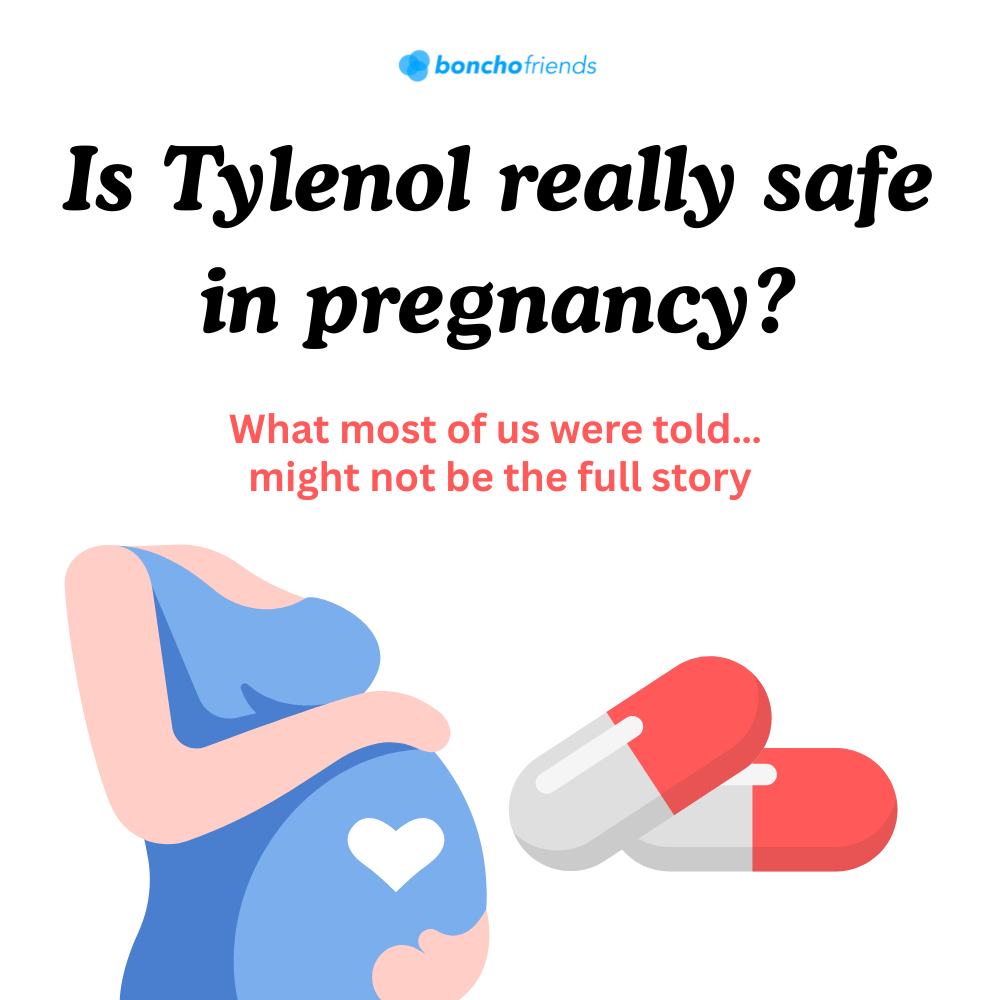
When East Meets West: A Deeper Look at Pregnancy, Fever, and Medicine (15 min read)
Share
The Question No One Can Ignore
For decades, pregnant women everywhere have heard the same advice:
👉 “If you get a fever, take Tylenol. It’s the safest option.”
But recent research is reopening a conversation many thought was settled.
Is Tylenol truly safe in pregnancy—or is there more we need to understand?
And how does Traditional Chinese Medicine (TCM), with thousands of years of practice, approach the same problem?
Let’s dive deep into both perspectives.
🧪 Western Medicine: What Research is Revealing
Tylenol and Autism Concerns
Several studies indexed on PubMed (NIH 2009, 2015, Johns Hopkins 2019, and more) suggest possible links between prenatal acetaminophen (Tylenol) use and neurodevelopmental issues, including autism and ADHD. (PMID: 38592388, PMID: 34046850, PMID: 39637384, PMID: 35989852)


Why Might This Happen?
The science points to glutathione depletion.
- Tylenol is metabolized in the liver, binding to glutathione—the body’s master antioxidant.
- When glutathione is depleted, oxidative stress rises.
- During pregnancy, this depletion may increase risks of:
- Developmental delays
- Nervous system abnormalities
- Complications like preeclampsia
Other Antipyretics Aren’t Perfect Either

So why does Tylenol remain first-line in pregnancy? Because alternatives often carry higher risks:
- ❌ Ibuprofen (NSAIDs): miscarriage risk in early pregnancy; later, it may cause ductus arteriosus closure or kidney problems in the fetus.
- ❌ Aspirin: linked to bleeding and birth defects; never recommended for fever in pregnancy.
Bottom line: Tylenol is still considered the “least dangerous” option—but least dangerous ≠ completely safe.
🧠 The Immune System in Pregnancy
Pregnancy itself reshapes immunity:
-
Th1 (cell-mediated immunity) decreases
-
Th2 (humoral immunity) increases
This protects the fetus from being rejected as “foreign,” but it also makes mothers more vulnerable to infections.
Some women are even more at risk:
- Chronic conditions (diabetes, hypertension, autoimmune disease)
- Use of immunosuppressants or steroids
- Nutrient deficiencies (protein, iron, zinc, vitamin D)
- High BMI or severe underweight
- Advanced maternal age (>35), multiple pregnancies
- Smoking, alcohol, chronic stress

☯️ TCM: A Different Lens on Fever in Pregnancy
In TCM, pregnancy is a delicate balance of Qi, Blood, Yin, and Yang. Treatments must protect the fetus while gently supporting the mother.
Instead of immediately prescribing a fever reducer, TCM asks:
- What is the root?
- Which patterns are at play?
- How can balance be restored safely?
The 8 Principles: The Starting Point
To understand fever in pregnancy, TCM begins with the 8 Principles: Yin/Yang, Interior/Exterior, Deficiency/Excess, Cold/Heat.
👉 If you’re still mastering these basics, review the Foundations Deck 8 Principle cards —they’re essential.
Example 1: Yin Deficiency Heat (Interior / Deficiency / Heat)
Sometimes pregnant women feel feverish without having a cold or flu.
This can happen due to Blood deficiency → Yin deficiency → Yin-deficient heat.
- Acupoints to consider: ST 36 (Zusanli), LI 11 (Quchi)
- Goal: nourish, strengthen, and gently clear heat.


Example 2: Exterior Excess Heat (Exterior / Excess / Heat)
Other times, a real exterior pathogenic factor (in biomedical terms, viral invasion) leads to high fever.
- Acupoint to consider: DU 14 (Dazhui)
- Goal: release exterior, clear excess heat.

👉 These examples show how TCM looks at the bigger picture first, then tailors the treatment accordingly.
And these were just acupoints.
But what about herbs?
🤔 Coming Soon: Safer Herbs for Fever in Pregnancy
One of the most common questions we hear from students and practitioners is:
“What herbs are safer—or unsafe—for fever in pregnancy?”
We’re preparing a detailed list of gentler, pregnancy-considered herbs—with cautions and practitioner guidance.
👉 But here’s the catch: we’ll only reveal it if our Instagram post reaches 50+ comments.
💬 Join the conversation on Instagram → (click here)
🧩 East Meets West: What We Learn Together
When we compare the two systems, a valuable lesson emerges:
- Western medicine highlights potential dangers like glutathione depletion and drug-related risks.
- TCM emphasizes gentleness, personalization, and protecting both mother and baby.
Together, they provide a fuller, safer view of maternal care.
🛠 Practical Non-Drug Approaches for Mild Fever
Both modern and traditional care agree: not every fever needs medication.
Supportive measures can include:
- Hydration with lukewarm water
- Tepid baths or wet towels
- Adequate rest
- Balanced nutrition (protein, vitamins, minerals)
These strengthen resilience, helping reduce reliance on stronger interventions.
🎴 Why Study with Boncho Friends Cards
At Boncho Friends, our mission is to make TCM study simple, fun, and practical.
Our study cards cover every major area of TCM—Herbology, Acupuncture, Foundations, Diagnosis, Pathology & Pharmacology—so you can:
- Build a solid foundation with the 8 Principles and core theory
- Learn single herbs, formulas, and cautions in a visual, memorable way
- Master acupoints and clinical applications with clarity
- Practice differential diagnosis with confidence using the Diagnosis Deck
- Study Western pathology and pharmacology alongside TCM theory
- Prepare not just for exams (NCCAOM, CALE, Pan-Canadian), but for real-life clinical practice
✨ With Boncho Friends, you’ll remember not just the facts—but the stories and logic that bring TCM to life.
Because knowledge isn’t just for passing tests—it’s for helping patients, protecting mothers and babies, and carrying this medicine forward.
Warmly,
Bora & Isaac
Boncho Friends



